Análisis del Circuito Gilles Villeneuve (Canada) — Previa al Gran Premio [ESP-ENG] #F1 #GPCanada
Hay circuitos en la Fórmula 1 que destacan por sus particularidades o también por albergar una curva o zona especial desde el punto de vista simbólico. Es así con el Circuito Gilles Villeneuve, ubicado en la ciudad de Montreal, Canadá. Este circuito tiene una última curva muy especial, una chicane muy rápida y técnica, en la cual el muro a la salida ha sido bautizado como "El muro de los campeones" por los distintos campeones que se han estrellado allí, como ha sido el casi de Michael Schumacher, Damon Hill, Sebastian Vettel, Jenson Button, entre otros.

En este video de #3Speak para #FullDeportes analizaremos el circuito de Gilles Villeneuve, desde el punto de vista técnico, evidenciando sus particularidades.
De igual manera, esta será la previa a lo que será el Gran Premio de Canadá de la temporada 2022 de la Fórmula 1. Veremos cómo llegan los principales equipos a esta carrera, cuales podrían ir mejor, y cuales podrían darnos sorpresas. De acuerdo a los resultados de las prácticas libres, algunos pilotos y equipos poco habituales se han visto muy cerca de la punta.
Esta puede llegar a ser una carrera muy interesante, y es a lo que nos tiene acostumbrados este circuito, especialmente si se dan condiciones de pista húmeda.
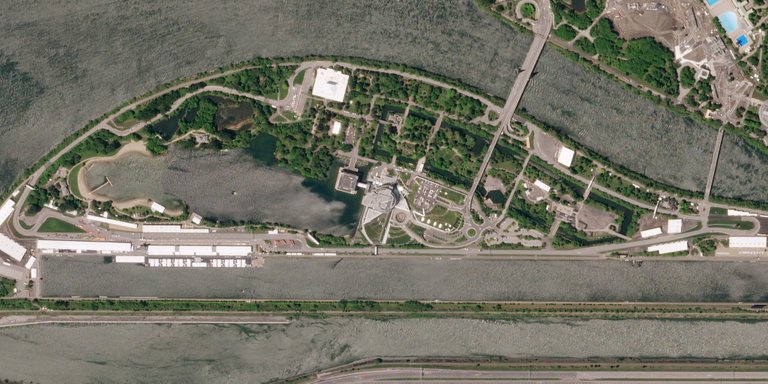
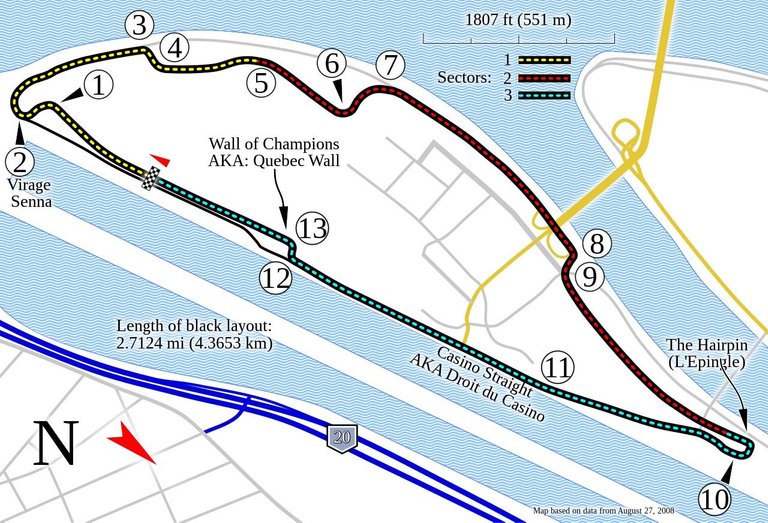
El Circuito de Montreal posee una longitud de 4361 metros, con un total de 13 curvas. También analizaremos este circuito de acuerdo al Número de Curvas por Kilómetro. Tal como ya sabemos, y podemos evidenciar en este análicis, el Circuito de Montreal es una pista muy rápida, con diversas chicanes que lo hacen un poco similar a Imola (Autódromo Enzo e Dino Ferrari).
Personalmente, veo a este circuito como una versión menos técnica y más rápida de Albert Park (Melbourne, Australia). No es un autódromo. Se trata de una pista semi-urbana que funciona tanto para carreras de automovilismo como para uso público o particular, un circuito híbrido al estilo de Melbourne.
1978-1986

1988-1993

1994-1995

1996-2001
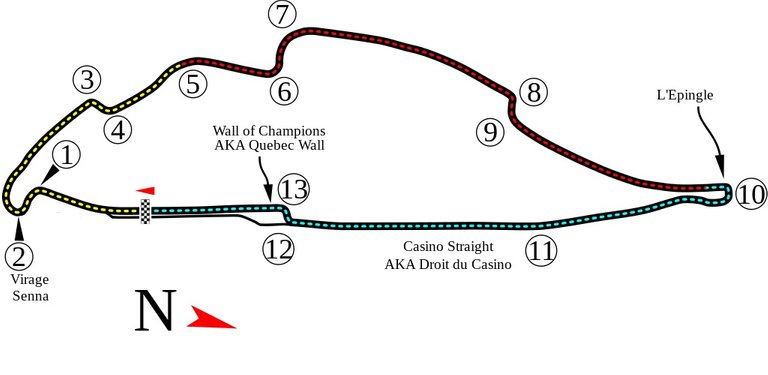
Trazado actual
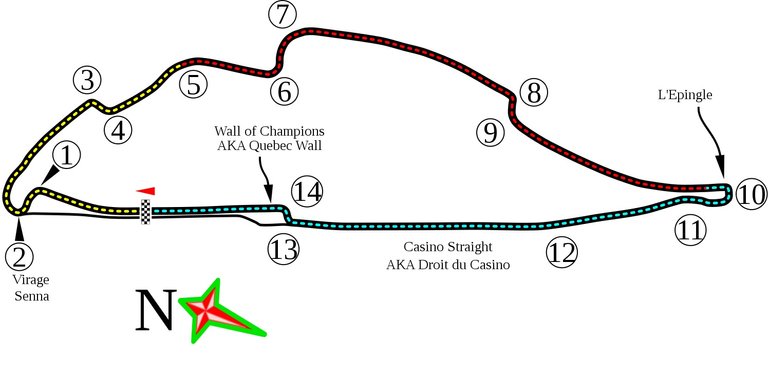
Este circuito ha sufrido ciertos cambios desde su inauguración en el año 1978. Arriba podemos ver su evolución en el tiempo. Empezó siendo un circuito bastante más intrincado, con rectas cortas a todo lo largo. En décadas más recientes tomó su forma actual, con menos curvas y rectas más largas.
Si hay algo que podemos destacar de este circuito es la ausencia de curvones de alta velocidad, a excepción quizás de la ligera curva antes de la horquilla N°10. Todo el circuito está compuesto de rectas y chicanes, además de solo dos horquillas lentas. Es por esto que se lo conoce como un circuito rápido, donde el motor y el freno importan mucho, ya que se alcanzan altas velocidades y se pisa el freno abruptamente de manera frecuente.
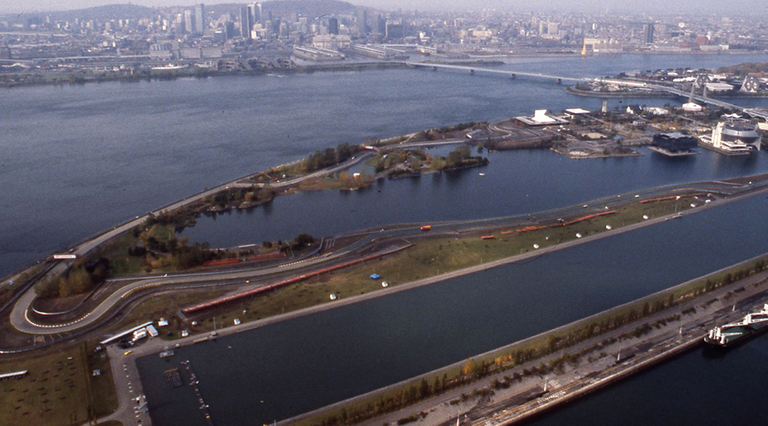
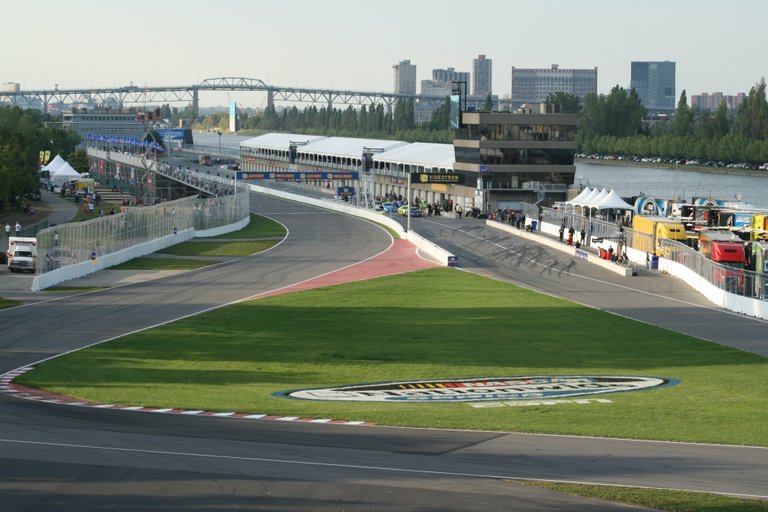
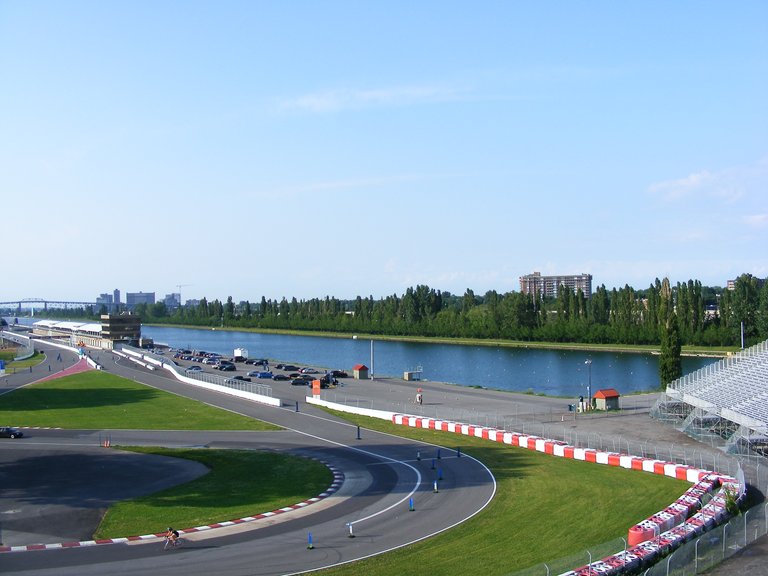
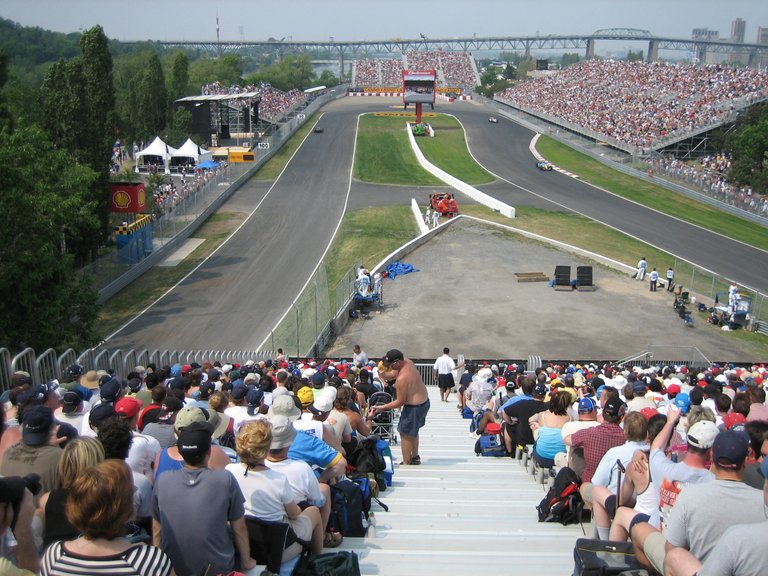
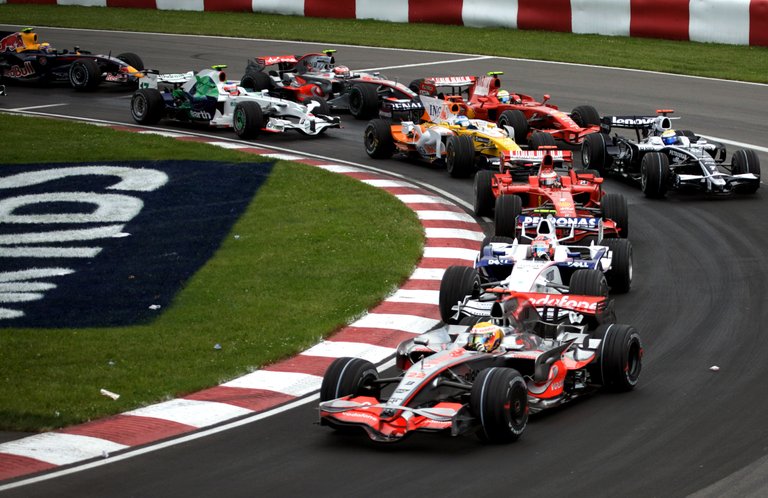
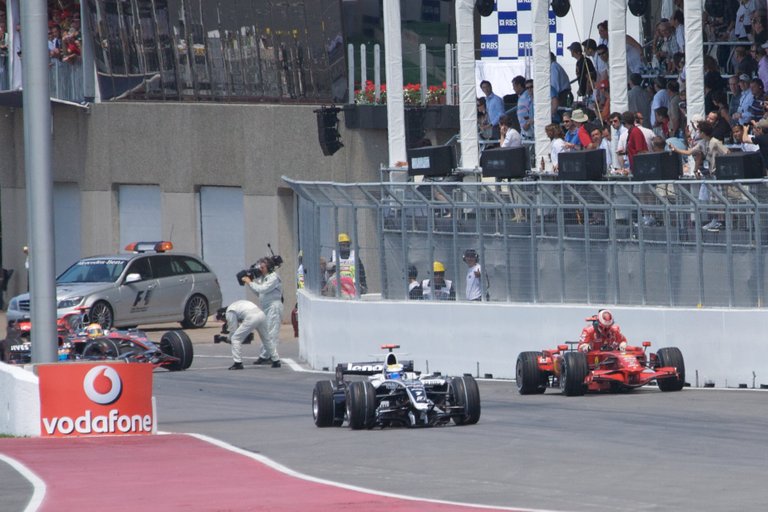

¡Espero que disfrutes este video! Se analiza el Circuito de Montreal, el Circuito Gilles Villeneuve, y además tenemos la previa al Gran Premio de Canadá, el cual nos promete una carrera muy interesante y con sorpresas.

There are circuits in Formula 1 that stand out for their particularities or also for having a special curve or area from a symbolic point of view. This is the case with the Circuit Gilles Villeneuve, located in the city of Montreal, Canada. This circuit has a very special last curve, a very fast and technical chicane, in which the wall at the exit has been baptized as "The wall of champions" by the different champions who have crashed there, such as Michael Schumacher, Damon Hill, Sebastian Vettel, Jenson Button, among others.
In this #3Speak video for #FullDeportes we will analyze the Circuit Gilles Villeneuve, from the technical point of view, evidencing its particularities.
Likewise, this will be the preview to what will be the Canadian Grand Prix of the 2022 Formula 1 season. We will see how the main teams arrive to this race, which ones could go better, and which ones could give us surprises. According to the free practice results, some unusual drivers and teams have been very close to the front.
This could be a very interesting race, and that is what we are used to at this circuit, especially if there are wet track conditions.
The Montreal Circuit has a length of 4361 meters, with a total of 13 turns. We will also analyze this circuit according to the Number of Turns per Kilometer. As we already know, and as we can see in this analysis, the Montreal Circuit is a very fast track, with several chicanes that make it a bit similar to Imola (Autodromo Enzo e Dino Ferrari).
Personally, I see this circuit as a less technical and faster version of Albert Park (Melbourne, Australia). It is not an autodrome. It is a semi-urban track that works both for motor racing and for public or private use, a hybrid circuit in the style of Melbourne.
This circuit has undergone some changes since its inauguration in 1978. Above we can see its evolution over time. It started out as a rather more intricate circuit, with short straights all along its length. In more recent decades it took its current form, with fewer curves and longer straights.
If there is one thing we can highlight about this circuit, it is the absence of high-speed corners, except perhaps for the slight curve before hairpin N°10. The whole circuit is composed of straights and chicanes, plus only two slow hairpins. This is why it is known as a fast circuit, where the engine and braking matter a lot, as high speeds are reached and the brakes are abruptly applied frequently.
I hope you enjoy this video! We analyze the Circuit de Montréal, the Circuit Gilles Villeneuve, and we also have a preview of the Canadian Grand Prix, which promises a very interesting race with surprises.
FuentesSources:
https://twitter.com/FormulaStats_/status/1537953195594436609?s=20&t=HDfxBWDc0hKMKYL59SCM6w
https://twitter.com/victorabadf1/status/1537919562699534344
Música: Time for Machine (Gvidon) - Pixabay
Translated to English language with the help of DeepL.com
 |
 |
Otras redes sociales:
 |
 |
 |
 |
| ¡Gracias por visitar! — Deja tu comentario 🚥🏆  |
▶️ 3Speak
https://twitter.com/acontmotor/status/1538295073888141314
The rewards earned on this comment will go directly to the people sharing the post on Twitter as long as they are registered with @poshtoken. Sign up at https://hiveposh.com.
Como siempre, un vídeo impecable.
Agradecemos que haya tomado en cuenta nuestras sugerencias.
Es un circuito con mucha historia y nos gusta que nos haya actualizado respecto al trazado que se correrá este año.
Continuemos construyendo.
Enhorabuena..!
¡Saludos amigos de Full Deportes!
Me alegra que el video tenga su apreciación.
Seguimos construyendo. ¡Saludos!